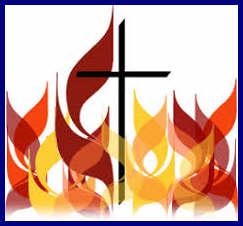
A NEW PENTECOST IN THE MAKING
In several places in the world I have seen examples of a new Pentecost, in the form of scripture/spirit as source, worship as summit, and community as church. In these cases, the source of inspiration is NOT the Sunday liturgy per se but scripture, usually shared in small groups. It is the Spirit that is the source, not the church-made liturgies. Second, when people are prepared by weekly scriptural readings, Sunday worship becomes the summit to which they converge; then people want to attend, because they experience attendance as spiritual growth. Thirdly, there is a new discovery of the church as face-to-face community rather than abstract community of faith. It is in small communities rather than in impersonal Sunday assembles that the church becomes body of Christ
The pre-Vatican II church was strong 1) when the source of inspiration was devotional piety in family and devotional groups. 2) The Sunday Latin Mass was community devotionalism, therefore most people felt the need to attend. 3) Parishes were small due to the great number of priests; hence they were communities with a human face. Once devotions faded away without being replaced, the Sunday liturgy often became a hollow shell, and parishes morphed into megachurches around the few available priests.
Two exceptional EXAMPLES:
At Rick Warren's Saddleback
church, 'More people attend Saddleback small groups in an average week [meeting weekly in homes] than attend the weekend services." There are over 20,000 attending Sunday services. So, if in a given parish there are 2,000 at the Sunday Mass, there should be 2 500 people meeting in homes during the week. Tis seem a good recipe for parish renewal.
This model is followed by thousands of churches in the U.S. and abroad.
At the St. Alphonse parish in Kinshasa, Congo, there are about 30-35 neighborhood communities meeting weekly in homes for prayer and reflection, Each community consists of about 30-40 people. On weekdays, Monday through Friday, there are about 2,000 people at the morning Mass, according to the pastor. The early Sunday Mass begins at 6;30 am. When I arrived at exactly 6:30 there was not a single seat left in the 2000 seat church. Here too personal piety fosters community participation.
This parish has been the flagship of renewal for the last 30 years.
In the U.S. and Guatemalan, I visited quite a few parishes with small communities meeting in homes. The arrangements were very diverse, but the results were the same: private commitment fosters public participation and a sense of community.
My diagnostic: lack of personal personal religiosity and spiritual insights of the clergy by not realizing that the liturgical spirituality of the hours is for monks or agrarian societies, and not replacing the traditional devotions with anything
At least three factors seem necessary for successful parish renewal in our social media culture: strong life of personal faith on the part of the clergy and the faithful, attractive and inspiring community celebrations (not just Sunday Masses), and a proper reading of the signs of the times. The emphasis on restoration and orthodoxy of the last three decades was ill-inspired.
Today the future seems grim. Since Vatican II private devotions have been neglected and not replaced, the Sunday liturgies are often isolated "summits" within the weekly secular desert, and there is no visionary reading of the signs of the times. As a result Catholics, young and old, are leaving.
Reclaiming the Church of the Baptized: Another Vision of Being Church Today
by SimonMary Aihiokhai,
University of Portland
I was still in the junior seminary in the then Diocese of Benin City, now an archdiocese, when the former bishop, Patrick Ebosele Ekpu launched the movement, Evangelization 2000 in 1987. I recall attending the event and listening to the bishop speak to representatives from each parish and mission in the diocese on the need to re-energize the witnessing of the church in the diocesan territory. What was his strategy? It was simple, make the baptized members of the church the face of evangelization in the diocese. Each parish or mission was to be divided into zones, wards, and units. Each zone had a zonal coordinator. Their primary duty was to be the eyes of the catechist in their zones. They were mainly the junior catechists answerable to the parish catechist. The zonal coordinator also helped to facilitate and coordinate zonal events. The zonal coordinators were members of the parish pastoral council.
Looking back to those years, I recall how my parish grew from just a few hundred members to a very vibrant faith community. Vocations to religious and priestly life grew, many members became lay missionaries to their respective neighborhoods and communities. Clerical power became decentralized in the parish. Baptismal identity and not ministerial identity through ordination was stressed and embraced. Members of the parish got to know each other better.
There was a sense of shared governance and appreciation of talents. Many lay organizations like Block Rosary, Blue Army, Infant Jesus, Legion of Mary, Holy Face of Jesus, Charismatic Renewal, Sacred Heart of Jesus, Divine Mercy, were introduced into the parish life. The pastor of my parish, a canonist by training, began to appreciate his role more as a facilitator and moved away from the paradigm of being an administrator.
The old model of diocese and parish seem to create communities of strangers who gather on Sundays and only approach each other with an exchange of the kiss of peace without even knowing who they are kissing. The priest seems to be overwhelmed by the task of pastoring hundreds of families. Neighbors do not even know when they attend the same parish. These anomalies force one to ask the question, what does it mean to be church, a community of believers, today? Should community begin and end in the parish building or go beyond there to our streets and neighborhoods?
The vision of Bishop Ekpu for the Archdiocese of Benin City ended when he retired.